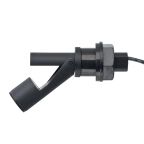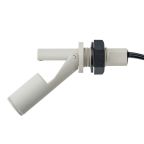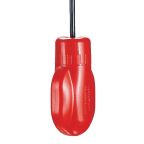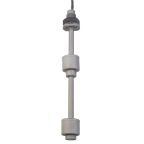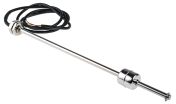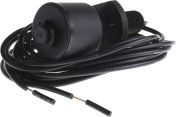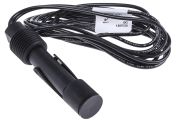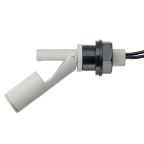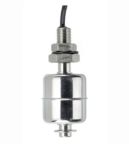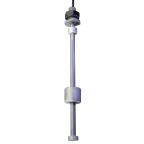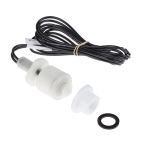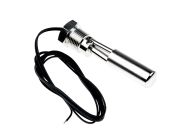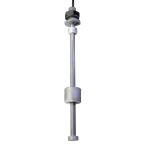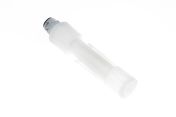Float Switches
A float switch is a level sensor used to detect the level of liquid usually in a tank, container or well. The flotation part of the device sits on top of the liquid and will switch on the rise and fall of the liquid. Float switches are used for automatic level control of groundwater, wastewater, and sewage pumps, for raw water and liquid transfer pumps at waterworks, and for high water alarm.
Float switches have numerous features and benefits, the most important is for the protection of equipment, they are also used due to their highly flexible, extremely insensitive to turbulence, they are both shock and rupture proof, and have high mechanical load rating.
How does a Float Switch work?
Float switches have a reed switch and a pivoted magnet and can be used for normally open (N/O) or normally closed (N/C) operation. The switch action can be reversed rotating the switch through 180°.
The switch sits on top of a water level and the changing fluid level will cause the reed change to work (for instance close or open) at a specific level. The internal mechanical switch opens or closes the electrical circuit with gravity which enables it to turn equipment on and off such as a water pump. They can be mounted in a variety of ways due to work with the applicational requirements, one of the most popular being vertical float switches, and come with different voltages such as240V as well as various others dependent upon use.
What materials are float switches made of?
- Nylon – used for oils, diesel, organic chemicals.
- Polypropylene (PP) – acids and alkali, detergents, oils, water, organic chemicals.
- Polyphenylene sulphide (PPS) – used for more aggressive chemicals, and higher temperatures, up to 120ºC.
- Stainless steel – medical and food industries, hydraulic fluids, chemicals.
Browse the broad range of Float Switches RS Group has to offer from brands such as Xylem and Atmi and order today for next day delivery.
Popular Searches
Related links
- Level Sensors
- Delta-Mobrey Side Mount Aluminium Alloy Float Switch SPST 240V dc Max
- RS PRO Float Switch Level Sensor Vertical, Stainless Steel Body
- Celduc PF2A Series Cable Mount Stainless Steel Float Switch 5m Cable 100V dc Max
- RS PRO Float Switch Level Sensor Vertical, Polypropylene Body
- RS PRO Float Switch Level Sensor Horizontal, Polypropylene Body
- Sensata Cynergy3 RSF70 Series Horizontal External Polypropylene Float Switch 1m Cable 240V ac Max, 120V
- Flowline Switch-Tek Series Vertical Polypropylene Float Switch 600mm Cable 120V ac Max,
